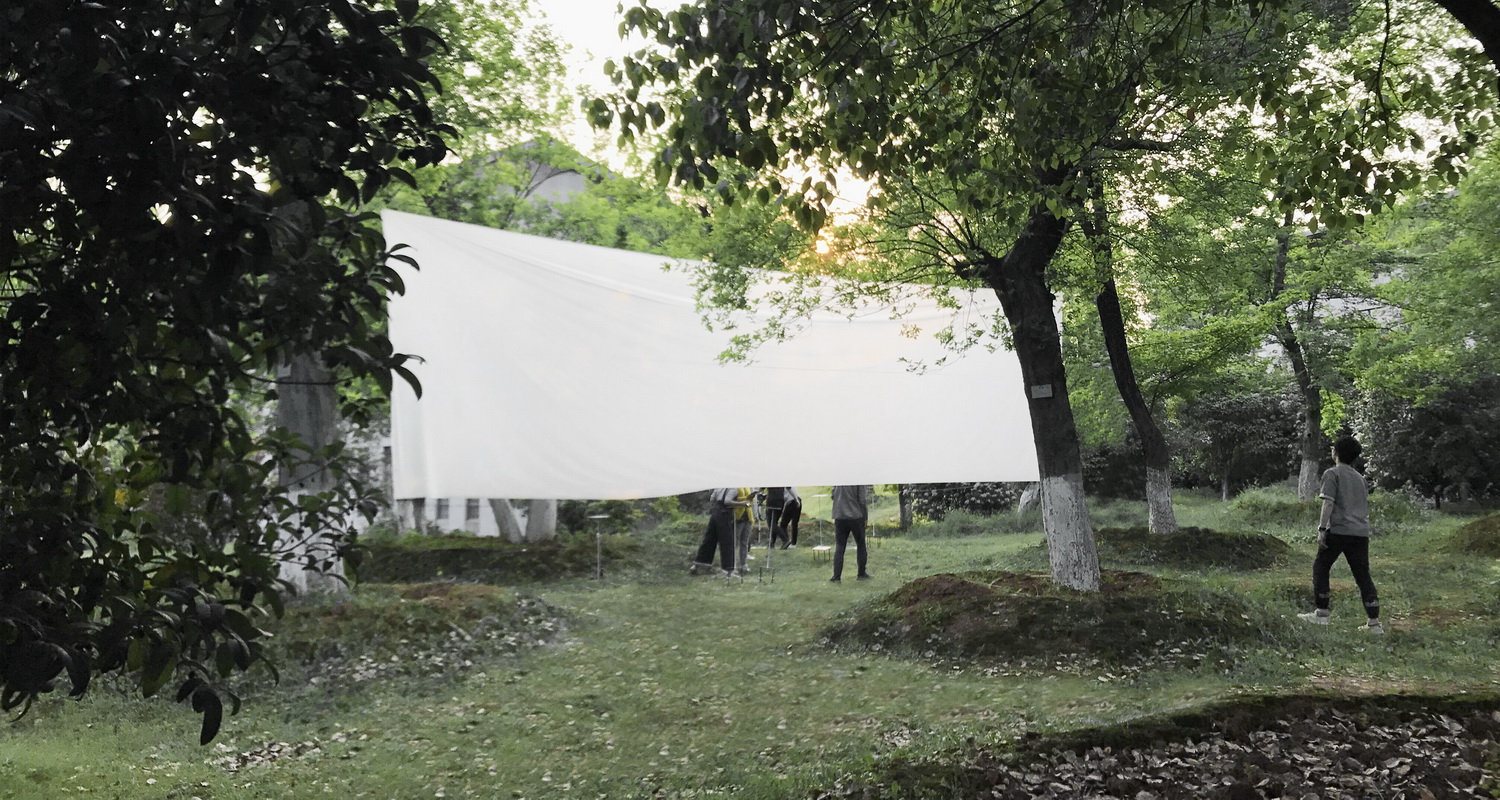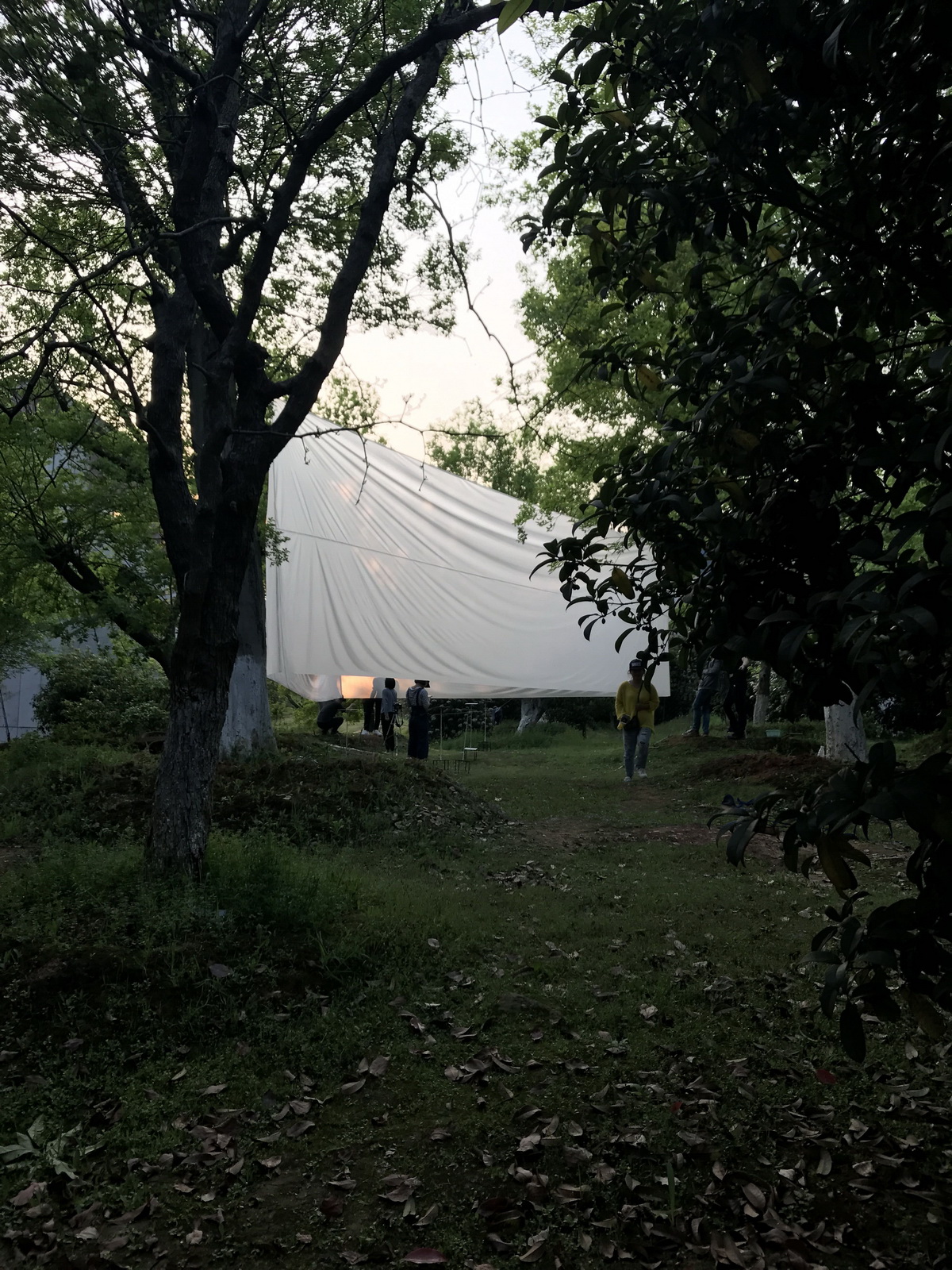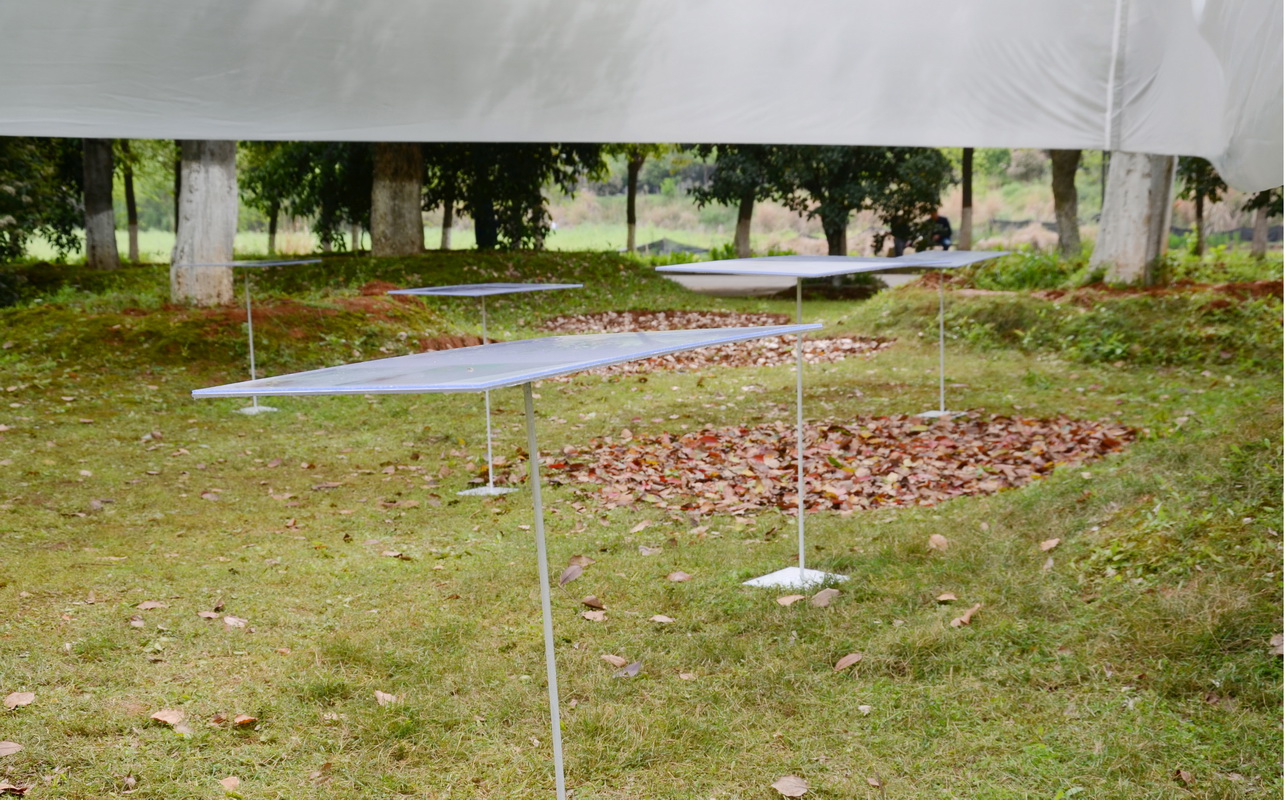LIGHT CONSTRUCTION
轻建造 2017

“看不见的城市”是卡尔维诺对城市匿名性的写作,事实上,“看不见”的背后蛰伏着主体的在场性。这种戏剧关系,可以理解为:主体在叙事抽离的同时,又使场所的建构回溯到主体。
如果将此转译到建筑语境中,主体与叙事正是身体与建造的关系,它们彼此又通过场所互相建构。于是,“看不见的花园”是一个匿名的场所,身体的建造动机是尽可能将潜在的场所进行揭示。基于此,在轻建造实践中,我们尝试以轻的姿态,对湖北美术学院A8楼前的树林的场所进行转译;轻是连接环境,建造,场所的三个思路,即:尽可能轻的与环境融合,尽可能轻的生产耗用,尽可能举重若轻的形成氛围。
"The invisible city" is Calvino's writing about the anonymity of the city. In fact, behind the "invisible" lies the presence of the subject. This kind of dramatic relationship can be understood as: while the subject pulls away from the narrative, it also traces the construction of the place back to the subject.
If you translate this into the architectural context, the subject and the narrative are the relationship between the body and the building, and they construct each other through the place. Therefore, the "invisible garden" is an anonymous place, and the motivation for the construction of the body is to reveal the potential place as much as possible. Based on this, in the practice of light construction, we try to use a light posture to translate the place in the woods in front of the A8 building of Hubei Institute of Fine Arts. Light is the three ideas of connecting environment, construction and place, namely: as light as possible. The environment is integrated, the production consumption is as light as possible, and the atmosphere is formed as light as possible.

